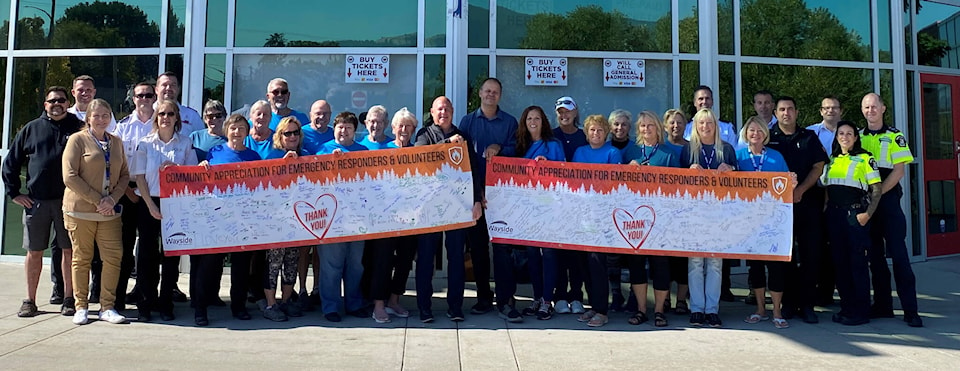After last year saw thousands of wildfire evacuees flee to Vernon for safety, further training is being provided to area residents to help in the event of another emergency situation.
More Emergency Support Services (ESS) responders in the region will be prepared to provide support to evacuees during emergencies thanks to new streamlined training and increased ESS funding of $30,000.
“Time and time again, we have seen the incredibly vital role that Vernon’s Emergency Support Services play to keep us all safe in times of crisis, like wildfire season,” said Harwinder Sandhu, Vernon-Monashee MLA. “I know it (funding) will help prepare our first responders to protect people and our communities in times of emergency.”
The B.C. government is launching a one-day training model for ESS responders in response to feedback from communities and input from the Premier’s Expert Task Force on Emergencies starting May 4.
The new training condenses the current week-long training model, allowing people to rapidly become trained as an ESS responder during emergencies, which will make the training more accessible for many people who want to be volunteers.
The course will prepare new ESS responders to provide trauma-informed and culturally safe support both in-person or by phone, which will help provide more ESS responders across B.C. in places that might not have a large volunteer capacity.
Vernon’s ESS Reception Centre was in operation for 15 days in 2023, during which time more than 2,400 people were assisted who had been displaced from their homes due to wildfires in West Kelowna, Kelowna, Lake Country and their surrounding areas, as well as parts of the Shuswap.
The government is also supporting almost 100 local ESS projects with more than $3.27 million through the Community Emergency Preparedness Fund (CEPF). Funding will help communities expand their capacity to provide ESS, as well as support the modernization of their ESS program to include more digital and remote support options.
The CEPF helps communities to better prepare for and mitigate the impacts of climate-related emergencies by funding local projects and initiatives in several categories. These include disaster-risk reduction and climate adaptation, public notification and evacuation-route planning, and emergency operations centre equipment and training.The Province has invested $369 million into the CEPF since its establishment in 2017. Approximately $176 million has been provided to First Nations and local governments through the CEPF for more than 1,800 projects. This includes over $13.5 million to support local ESS teams.
READ MORE: Team of 68 emergency volunteers ‘remarkable amid wildfires’
READ MORE: Rising from the ashes, planting trees in the Central Okanagan
